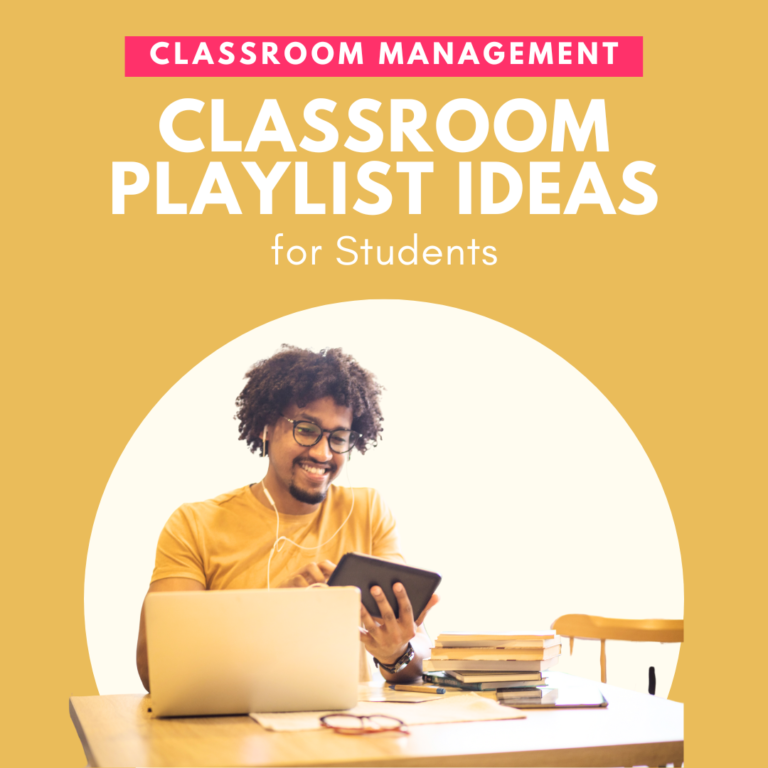A strong sense of classroom community is your greatest asset in secondary school. The key to any safe, welcoming, and productive work environment is communication. This is why I introduce icebreakers for high school students during the first week of school. We’ve played a ton of popular icebreakers for teens, and this blog post will share some student favorites!
It might seem unproductive to spend more than one block of instructional time on icebreakers for high school students. But if you’re trying to cultivate a classroom culture where students engage with one another and participate in your lessons, then opportunities to engage really matter.
When it comes to icebreakers for high school students, it’s important to have a goal in mind. Are you looking for a fun way to learn students’ names? Or are you hoping to develop team-building skills? Perhaps you just want to get students talking with one another. This can help you decide which icebreaker game would work best for your classroom.
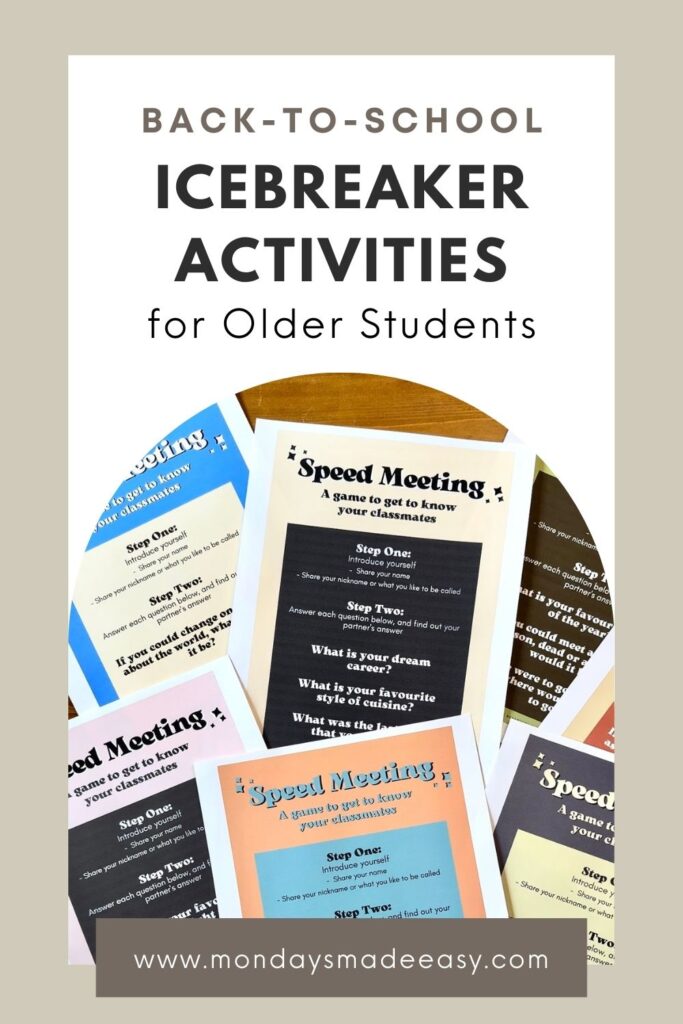
As a rule, it’s mindful to avoid anything that excludes students, undermines their intelligence, or demands too much vulnerability. Transitioning to high school is challenging enough; expecting students to open up to new peers does not make it any easier. Although competitive games are fun for some students, they’re generally not as fun for everyone; the goal, then, is to facilitate activities that are inclusive, engaging, and team-building.
Here are a few of my favorite icebreakers for high school students:
Speed-Meeting Icebreaker Activity
These icebreakers for high school students involve questions designed to facilitate interaction. To play, you can choose from a few options: you can either seat students in pairs at a circle of desks or create new groups of students at the beginning of each class.
Option One: Seat students in pairs at a circle of desks. Place a few icebreaker questions suitable for teenagers at each desk and set a timer. Students can have a set amount of time to discuss the icebreaker questions before rotating to a new station with new questions. I find the easiest way to do this is to have students in the inner circle move to the left after the first round, then have the students in the outer circle move to the right after the next round, etc.
Option Two: For the first few days of school, create new groups of students at the start of class. Select a new set of icebreaker questions for each day, and have different groups of students discuss them. This is a great option if you’d like to incorporate icebreaker activities over an extended period of time.
The key to this activity is to select questions that students will feel comfortable answering. This “Speed-Meeting” Icebreaker Game includes 30 engaging and age-appropriate questions designed as icebreakers for high school students. These questions are organized into ready-to-print activity sheets, and you can also use the card deck template to create a deck of cards.
If you have any students who are reluctant to participate, you can provide them with these icebreaker questions ahead of time so that they can prepare answers that they feel comfortable sharing.
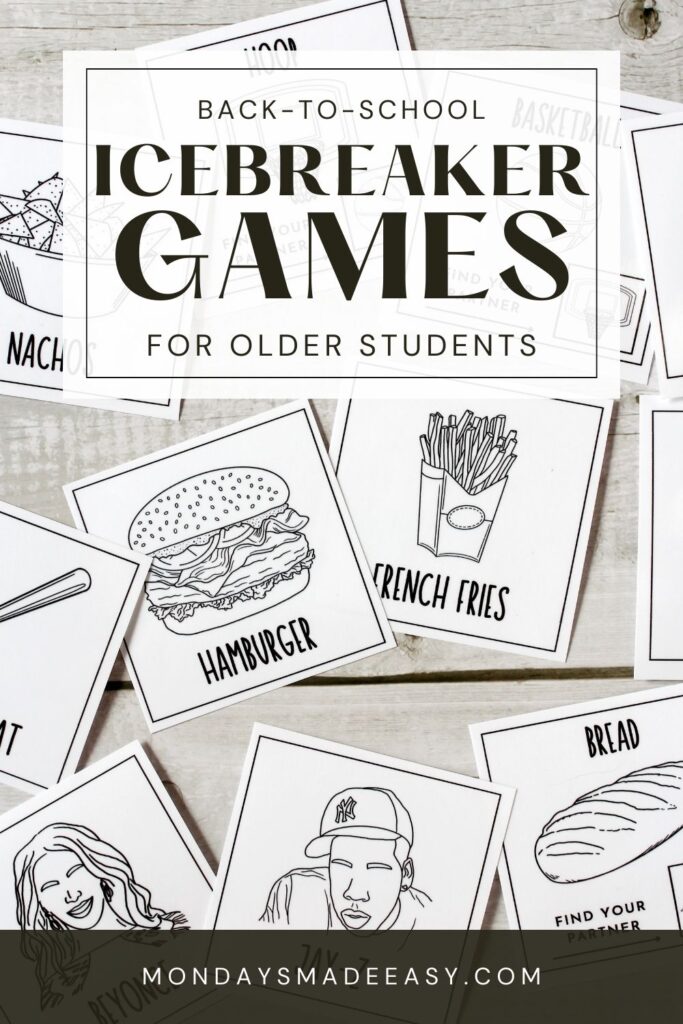
Fun Fact Scavenger Hunt
Here’s a great icebreaker activity for freshmen to help them get to know staff within the school. To prepare for this scavenger hunt, select a group of teachers and staff members that are likely to interact with freshmen students. Each staff member can share a fun fact about themselves to contribute to the scavenger hunt.
Students can then work in groups or individually to identify the staff member that shared each fun fact. This scavenger hunt is one of the engaging icebreakers for high school students that can be completed outside of class. Alternatively, you can provide students with permission to complete the scavenger hunt during class hours – the latter option offers students the opportunity to explore other classrooms and feel oriented with the school.
Collaborative Playlist
Teenagers are notoriously reluctant to overshare. One way to help them let down their guard is to allow them to express their identities through music preferences. Allow each student to select a song to contribute to a class playlist.
This collaborative playlist is one of the icebreakers for high school students that doubles as a writing activity. Get your students to write a short paragraph about what the song means to them. I typically reserve their written paragraphs for myself as I find this to be a great way to build confidentiality and trust with students; given the personal nature of music, I find this activity works best when students aren’t required to share their responses.
After you’ve built this playlist, you can modify it by finding clean versions of any songs with explicit language. Then, use this playlist during classwork periods or downtime.
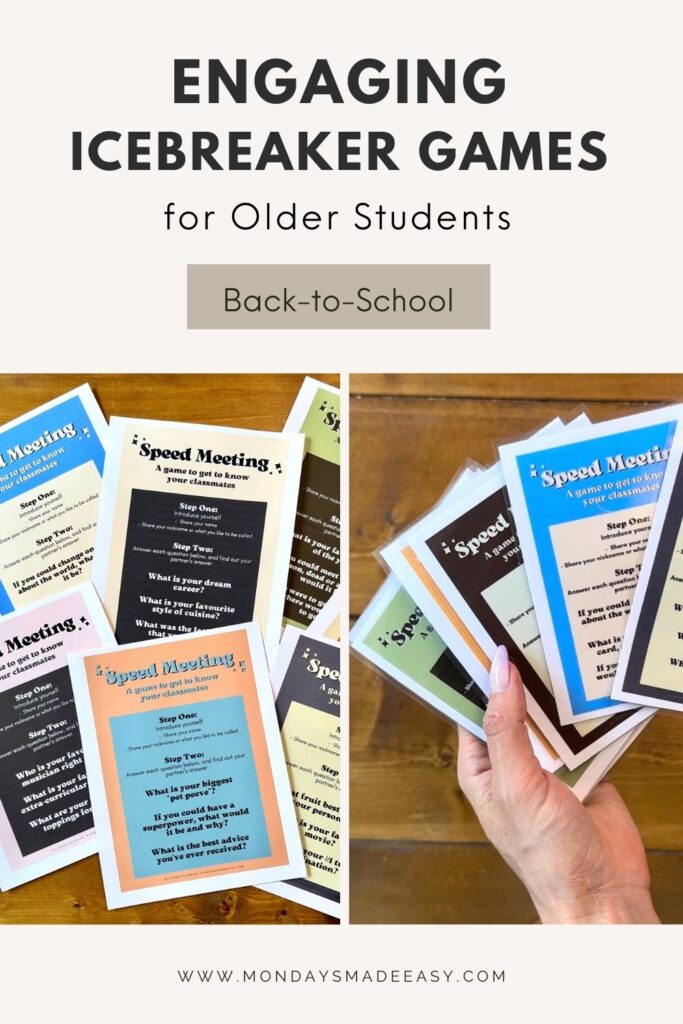
“Find Your Partner” Ice Breaker
Icebreakers for high school students, such as this game, will activate their inquiry-based learning skills and give them the opportunity to talk to their classmates. To start, write down a list of items or identities that often appear as pairs. Some examples include salt and pepper, Romeo and Juliet, the sun and the moon, peanut butter and jelly, Will and Jada Pinkett Smith, etc.
To play, each student in your class will assume the role of the item or identity you provide them with. You can even have students make their own headband from paper and glue and then adhere their identity with velcro or tape. This role is kept secret, and the goal of this icebreaker game is for each student to communicate to find their matching partner. To do so, students can ask yes or no questions about anything other than the name of their classmate’s role: for example, they can’t ask “are you the sun?” or “does your name rhyme with bun?”
If you have an uneven number of students, you can include a trio into the mix: so for example, you can have one set that includes red, yellow, and blue (primary colors) or stop, drop, and roll. Informing students that there is a trio can up the ante by making this icebreaker more challenging.
These partner pairing cards are one of the perfect icebreakers for high school students for facilitating the “Find Your Partner” game. You can continue to use this resource throughout the school year to pair partners at random for classroom activities and assignments. This resource also includes a headband template so that students can adhere their identity to their forehead.
Collaborative Story Writing
I especially love this option for freshmen and junior students in the English Language Arts classroom. As one of the icebreakers for high school students, this group exercise requires a transcriber, a timer, and a method to transcribe. I find that a word-processing device works best for this.
Students have a set amount of time to write a story based on a writing prompt – you can have a student create the prompt or select one from a list of pre-made writing prompts. Each student will add a sentence that relates to the sentence written by the student before them. They can say the sentence out loud while the transcriber notes it; alternatively, you can create a shared Google Doc® that enables each student to write down their sentence when it is their turn. Remind them not to worry too much about what they write – the whole point of this activity is to have fun.
When the last student has contributed a line to the story, you can loop back to the student who contributed the first sentence and continue to pass the responsibility along until the timer runs out. Whoever is the last one to contribute to the story must write a conclusion to tie the story together. You can then have a student volunteer read the entire story aloud.
Self-Serve Seating Plan
This game is also an example of the icebreakers for high school students that promote critical thinking and group collaboration. The goal of this game is for students to arrange themselves according to the seating plan you provide. Some ideas include having students sit in alphabetical order or by date of birth. I typically make the instructions vague so that the problem-solving is left up to them.
If you have students sit in alphabetical order, it is a great opportunity to help with memorizing names. You can even keep this seating arrangement for the first few days of school to support this process as you observe the natural dynamics of the class before changing the seating arrangement.
For a fun twist, you can challenge students to communicate non-verbally while they arrange the seating plan. This twist is possible if you have students arrange themselves by height or distance traveled to school.
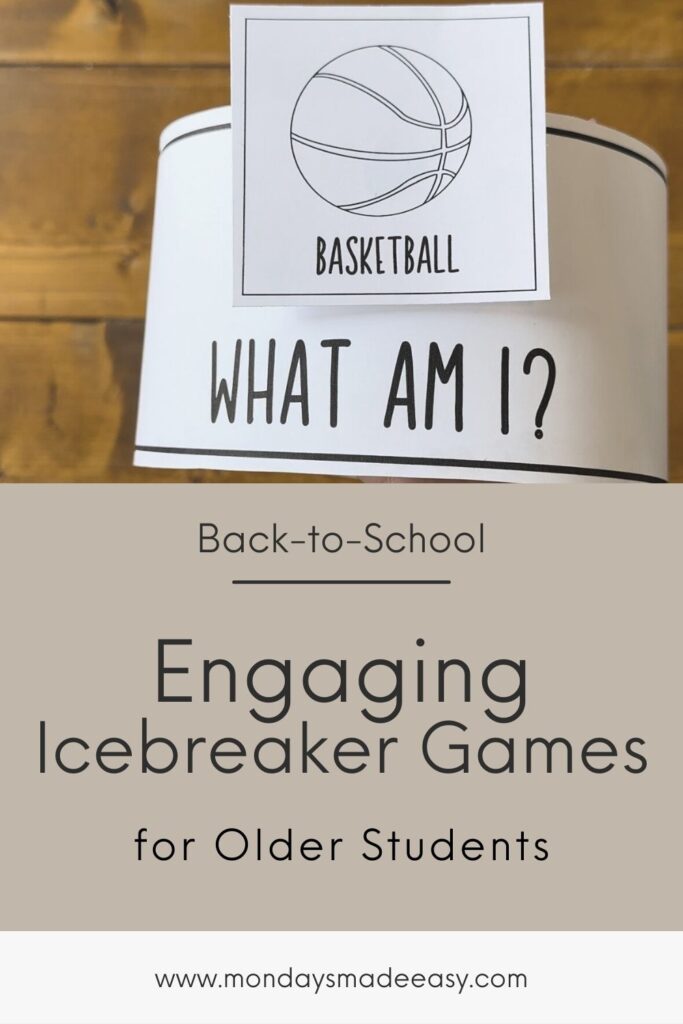
Icebreaker Bingo
I love using this icebreaker game as a get-to-know-you activity. Icebreakers for high school students like this one can help students connect and learn more about each other in a fun way. To create a bingo card for your class list, you can start out with a student survey to collect some information about your students. Be sure to preface this activity with the fact that you’ll be sharing fun facts about them so that they don’t assume the form to be confidential.
Alternatively, you can create a bingo card using generic facts that can apply to several different students in your class. Examples can include: “this student is the oldest child in their family,” or “this student speaks three languages.”
Once you’ve created your bingo card template, you can provide a copy to each student and have them circulate the room to engage with their classmates. When they’ve found someone to whom the fact on the bingo sheet applies, they can write that student’s name down in the box.
A Meme Tells a Thousand Words
This game is one of the icebreakers for high school students that will have them share their thoughts about class content through the vehicle of a meme. To play this game, you can search for memes or royalty-free images that express different reactions. Students can select the meme or image that best represents their thoughts on the subject that you teach. Alternatively, you can find royalty-free photographs that elicit a similar response.
Place the memes and images around the classroom. When students enter the room, you can instruct them to circulate and observe each image or meme to identify the one that best describes how they feel about the subject you teach.
Once they’ve selected the image, you can group them together based on their selection and have them discuss their answers with their peers. This provides students with the opportunity to interact with like-minded peers; additionally, this is a great time for you to circulate the room, to join in on conversations by reflectively listening, and to show your support to students by validating their comments or concerns.
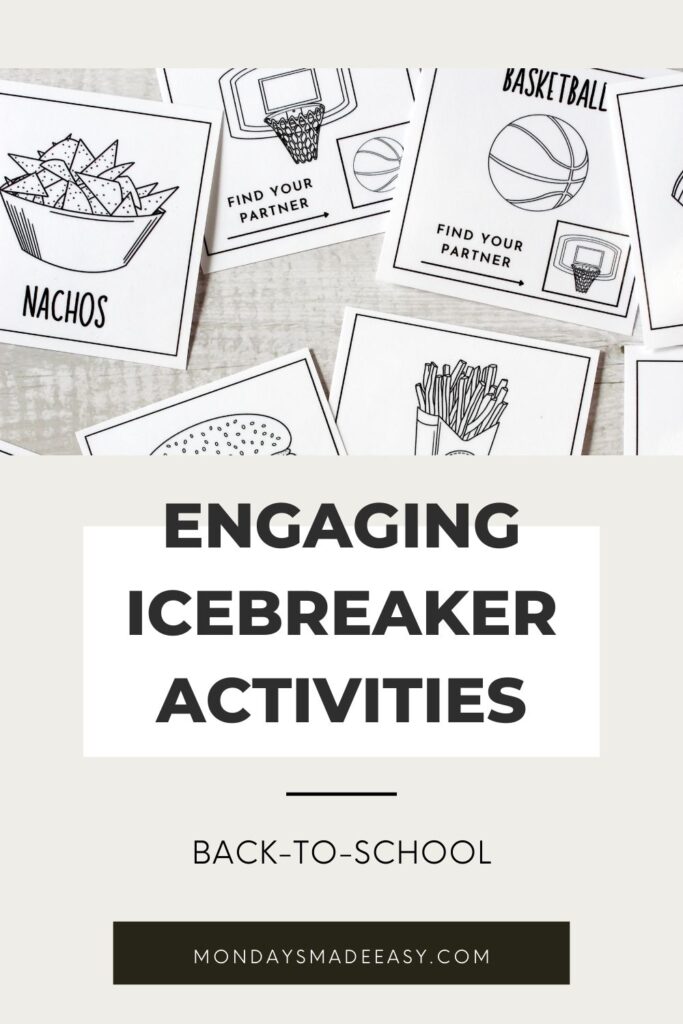
Fun icebreakers for high school students can be hard to come by. High school students are often reluctant to overshare. This is especially true for freshmen that are intimidated by their new environment, or seniors that prefer to keep to themselves. But the right icebreaker can make an immense difference in your learning environment by breaking through these mindsets.
I hope this list of icebreakers for high school students helps you foster a supportive and inclusive classroom culture this year. For more ideas for the 2021-2022 back-to-school season, check out my blog post on 8 Strategies for Starting a New School Year.


